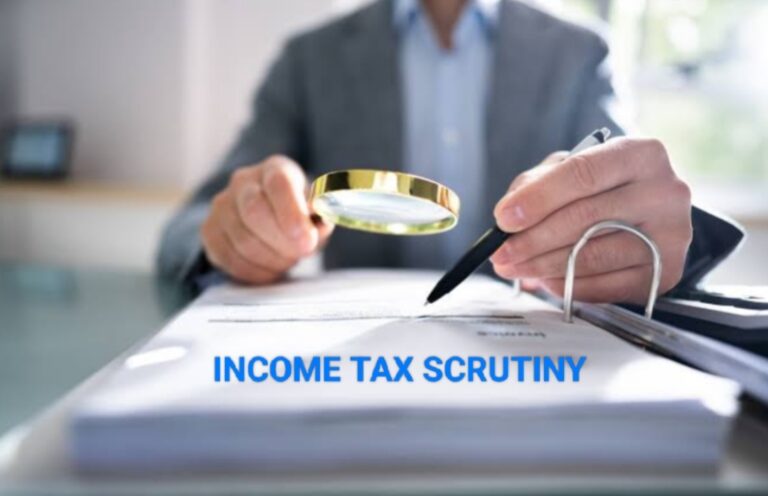The Income Tax Department has released updated guidelines explaining how certain Income Tax Returns (ITRs) are selected for scrutiny. These latest directions aim to bring more transparency to the scrutiny process and help taxpayers understand the reasons behind receiving scrutiny notices.
Every year, the Central Board of Direct Taxes (CBDT) issues a circular detailing the criteria for compulsory selection of ITRs for scrutiny. For Financial Year (FY) 2025-26, the CBDT issued its latest guidelines on June 13, 2025, highlighting parameters, processes, and timelines for scrutiny selection.
Latest Guidelines for ITR Scrutiny FY 2025-26: What Taxpayers Should Know
The scrutiny guidelines for FY 2025-26 are largely similar to the previous year but with certain notable additions. A significant change involves the treatment of cases where surveys under Section 133A of the Income Tax Act have been conducted.
Earlier, ITRs were selected for scrutiny under this section only if the survey led to information suggesting tax evasion. However, under the FY 2025-26 guidelines, any survey under Section 133A (excluding Section 133A(2A)) conducted on or after April 1, 2023, will automatically trigger scrutiny selection, regardless of whether tax evasion is detected.
This development may raise concerns among taxpayers subjected to surveys, as the mere occurrence of a survey can now lead to compulsory scrutiny.
Why Section 133A Surveys Matter for Scrutiny
It’s essential to understand that information obtained during a survey under Section 133A is treated as credible data indicating possible tax evasion or undisclosed income. Based on such information, tax authorities are empowered to initiate scrutiny under Section 143(2) or even reassessment proceedings under Section 148 of the Income Tax Act.
Timelines for Scrutiny Selection and Completion
For ITRs filed for FY 2023-24, here are the key deadlines:
✅ Issuance of Scrutiny Notice (Section 143(2)): By June 30, 2025
✅ Completion of Scrutiny Assessment (by NaFAC): By March 31, 2026
Many scrutiny notices have already been issued following these guidelines. Taxpayers and tax professionals should stay vigilant to avoid missing critical notices.
Common Triggers for Compulsory Scrutiny of ITRs
Apart from survey-related cases, the Income Tax Department also selects ITRs for scrutiny based on the following parameters:
✔️ Search & Seizure or Requisition Cases
✔️ Trusts and Institutions with Issues in 80G Approval or Registration
✔️ Information Received from SFT, TDS, Investigation Wing, or Law Enforcement Agencies
✔️ Large Additions in Past Assessments (Recurring Issues of Law or Fact)
CBDT Scrutiny Guidelines: Compulsory Selection Parameters for FY 2025-26
Here’s a quick overview of key parameters outlined by the CBDT:
| System Code | Scenario | Parameter Details |
|---|---|---|
| CS01 | Survey Cases | Assessees subjected to a survey under Section 133A (excluding Section 133A(2A)) conducted on or after 01.04.2023. |
| CS02 | Search & Seizure/Requisition (Apr 2023 – Aug 2024) | Assessees in whose cases a search under Section 132 or requisition under Section 132A was conducted between 01.04.2023 and 31.08.2024. |
| CS03 | Search & Seizure/Requisition (Sep 2024 – Mar 2025) | Cases with search or requisition conducted between 01.09.2024 and 31.03.2025 for AY 2025-26. |
| CS05 | Additions in Earlier Years | Cases where recurring additions in earlier assessments exceed ₹50 lakh in metro cities or ₹20 lakh in other cities, and the additions are final or upheld by appellate authorities. |
| CS06 | Specific Tax Evasion Information | Cases flagged by enforcement, regulatory, or investigative agencies with specific information on tax evasion for the relevant year, where the return has been filed. |
What Happens After an ITR is Selected for Scrutiny?
If your ITR is selected for scrutiny:
➡️ You will receive a notice from the Jurisdictional Assessing Officer (JAO) or NaFAC, seeking additional information.
➡️ You must respond through the Income Tax e-portal within the timelines mentioned.
➡️ Based on your response and available information, the assessment will be completed.
Timely and accurate submission of details is crucial to avoid penalties or further legal action.
Final Thoughts: Stay Informed, Stay Prepared
The Income Tax Department’s scrutiny selection process is systematic and based on pre-defined parameters to ensure fairness and transparency. However, with expanded triggers like surveys automatically leading to scrutiny, taxpayers must remain cautious, maintain proper records, and respond promptly to notices.
Consult a tax professional immediately if you receive a scrutiny notice to ensure your interests are protected.
FAQs on ITR Scrutiny
Q. Can I avoid scrutiny altogether?
Not entirely, but accurate, transparent filing and proper documentation reduce your chances.
Q. Are all scrutiny notices bad?
No, sometimes scrutiny is routine and may close quickly if proper records are provided.
Q. What if I miss responding to a scrutiny notice?
Non-compliance can result in penalties, adverse assessment, or reopening of past assessments.
Stay updated with the latest tax rules to avoid unwanted surprises during the assessment process.
